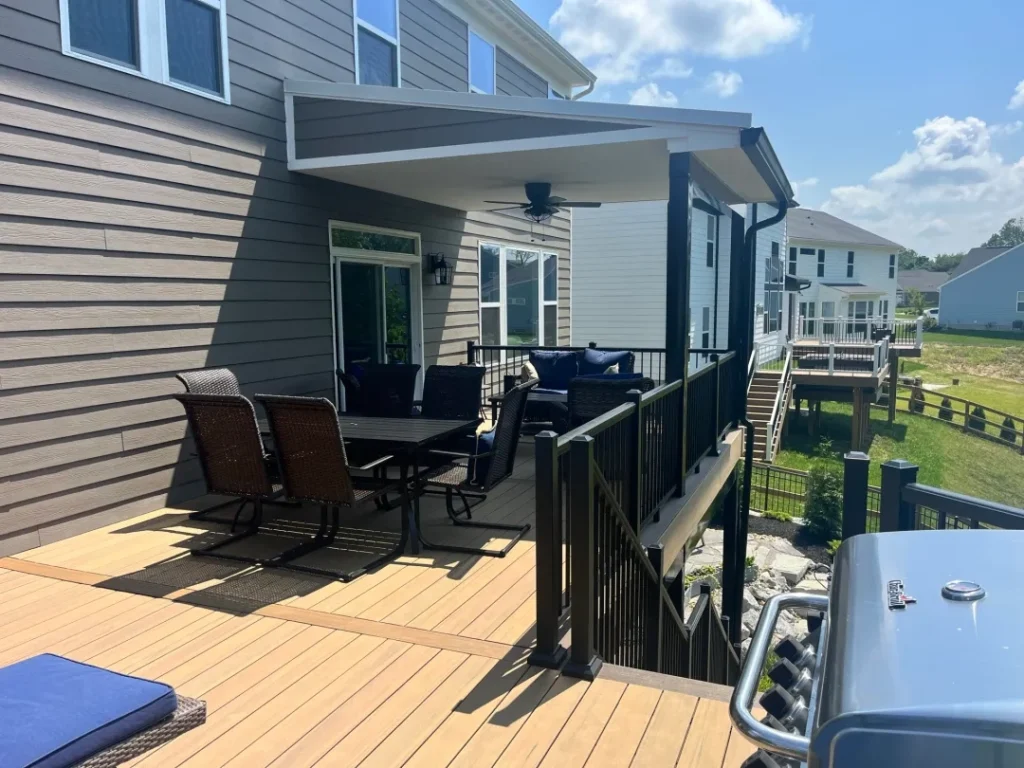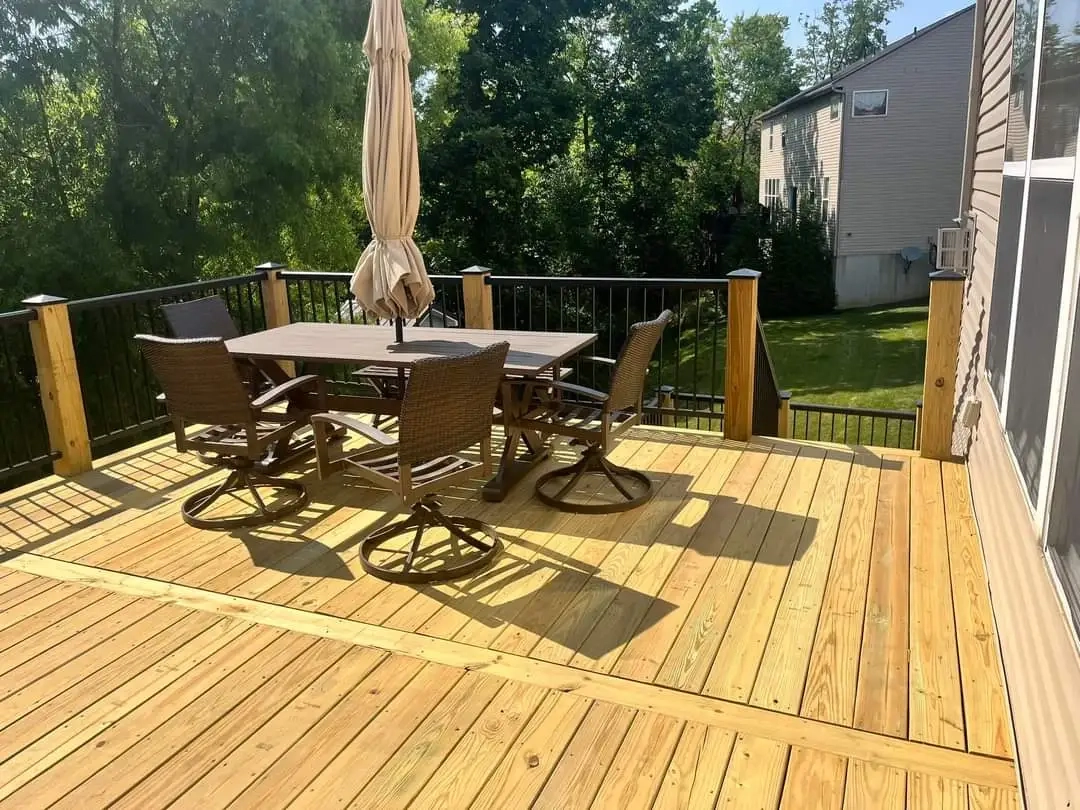Building a deck today is different than it was 20 years ago. Back then, there was only one option: wood. Now, there are 50+ different companies that produce various types of non-wood decking. This can be overwhelming when planning a deck project. Let’s compare wood decking to composite and list the advantages and disadvantages of each.
I am Corey, a co-owner of Outdoor Enhancements, an outdoor living contractor located in Dayton, Ohio. We’ve been building decks since 2017 and have constructed over a thousand decks in that time. I have seen and worked with every type of decking on the market. Composite decking today is completely different from what first came on the market 25 years ago. Initially, composite boards were a mixture of wood dust and shavings combined with plastic and extruded into the shape of a deck board. The idea was great, but over the years, it has been proven that these boards fade and absorb water.

Most composite boards produced today are “capped” boards. The core material is like the original boards, but now there is a capping that goes around the outside to prevent fading and water absorption. This capping is so effective that most major brands offer a minimum of a 25-year warranty on the decking. Since the first board hit the market, many other types of decking have been released, including PVC, mineral-based, stone, and fiberglass, each with its own advantages and disadvantages. Those we will cover in a future blog post.
Wood decking has remained the preferred choice year after year, even after the release of composite decking. Currently, wood decking outsells composite by 15%. Wood is a natural product that has been treated to withstand outdoor conditions and resist rot. In the Midwest climate, wood decks will typically last 15 to 20 years if maintained every 2 years. The advantages of wood are its lower cost to build, the ability to change its color, and its overall lower cost. The disadvantages are the significant amount of work required to keep them in good shape, their short lifespan, and the fact that they will deteriorate over time.

Composite decking is slowly taking over the decking market. Most homeowners prefer the look and feel of composite over wood. The advantages of composite decking are that it looks the same year after year from the day of installation, requires zero maintenance apart from cleaning when dirty, and it will never rot, is insect-resistant, and has no splinters. The disadvantages are the cost to build, the fact that it can be hot on bare feet, and again, the investment up front. It’s obvious cost comes into play with that being the biggest advantage of wood, and then the biggest disadvantage of composite. However, the cost of maintaining a wood deck will surpass the cost of composite over the life of the deck.
We always tell clients if they plan to stay in their home for more than 5 years, they should invest in a composite deck. I believe in this so much that I even will encourage clients to hold off on the build for a year and save for the composite deck. Our company motto is to bring families together, and that’s what a deck does. It’s a place to share a meal, some laughs, or even get that great family picture. So, whether you choose wood or composite, just know it will be a place to make memories for years to come!
